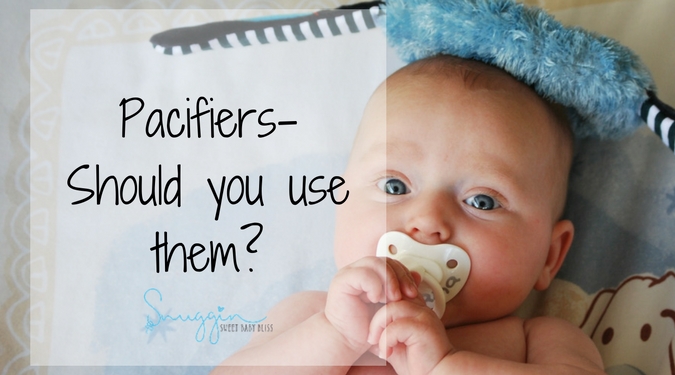
Comforting your little one is often your highest priority, but often no matter what you do, you just can’t stop them from fussing! This is when a pacifier may just be your shining saviour!
Not only can it help you calm your fussing baby, some studies have shown that the risk of Sudden Infant Death Syndrome is lower in babies who use a pacifier at bedtime and naptime. Though, it doesn’t mean that pacifiers prevent SIDS, it just a strong link between pacifier use and a low risk of SIDS.
So what are the downsides?
If you breastfeed, using a pacifier can cause nipple confusion for babies who haven’t quite got the hang of nursing just yet. Although there aren’t any studies which conclusively link the two, it might be worthwhile to wait until your baby is proficient at nursing before allowing them to use a pacifier.
It has also been shown that the use of pacifiers can increase the risk of middle ear infections in young children and babies. Although a way of mitigating this risk is to allow your baby to use a pacifier until they are 6 months, as the risk of infection is a lot lower in very young babies.
For most parents, resistance to using a pacifier is driven by the fact that they don’t want it to become a habit. If they introduce it, they will have to eventually take it away, which could be extremely difficult to do. So, if you do decide to give your baby be careful not to let your baby become too dependent on it.
Managing your baby’s pacifier use
Here are some great tips to help you when introducing a pacifier:
- Try only giving your baby a pacifier between feeds, this way you know that she isn’t hungry and it will lessen the risk of nipple confusion.
- Make sure you keep good care of your pacifier. Do your research and ensure you pick a pacifier which is safe and appropriate for your child. Keep it clean – avoid cleaning the pacifier by putting it in your mouth, this can lead to your baby getting cavities as soon as the get their teeth! Instead, rinse the pacifier in warm water and ensure you replace it the moment it shows signs of wear and tear.
- Only give your baby a pacifier at nap time and bedtimes. If they are fussing, try to comfort her in other ways first before resorting to the pacifier. That way she will avoid being too dependent on a pacifier.
- Perhaps the most important point, let your baby decide whether they use a pacifier. If they don’t take to it immediately, don’t push it on them. Either try again or just let it go.
When it comes to the use of pacifiers, it is all down to your preference. The advantages are clear, it can help soothe your fussing baby and can help provide them with another level of comfort. The downsides, are just as valid as the advantages. So it’s all down to what you and your baby are most comfortable with!
